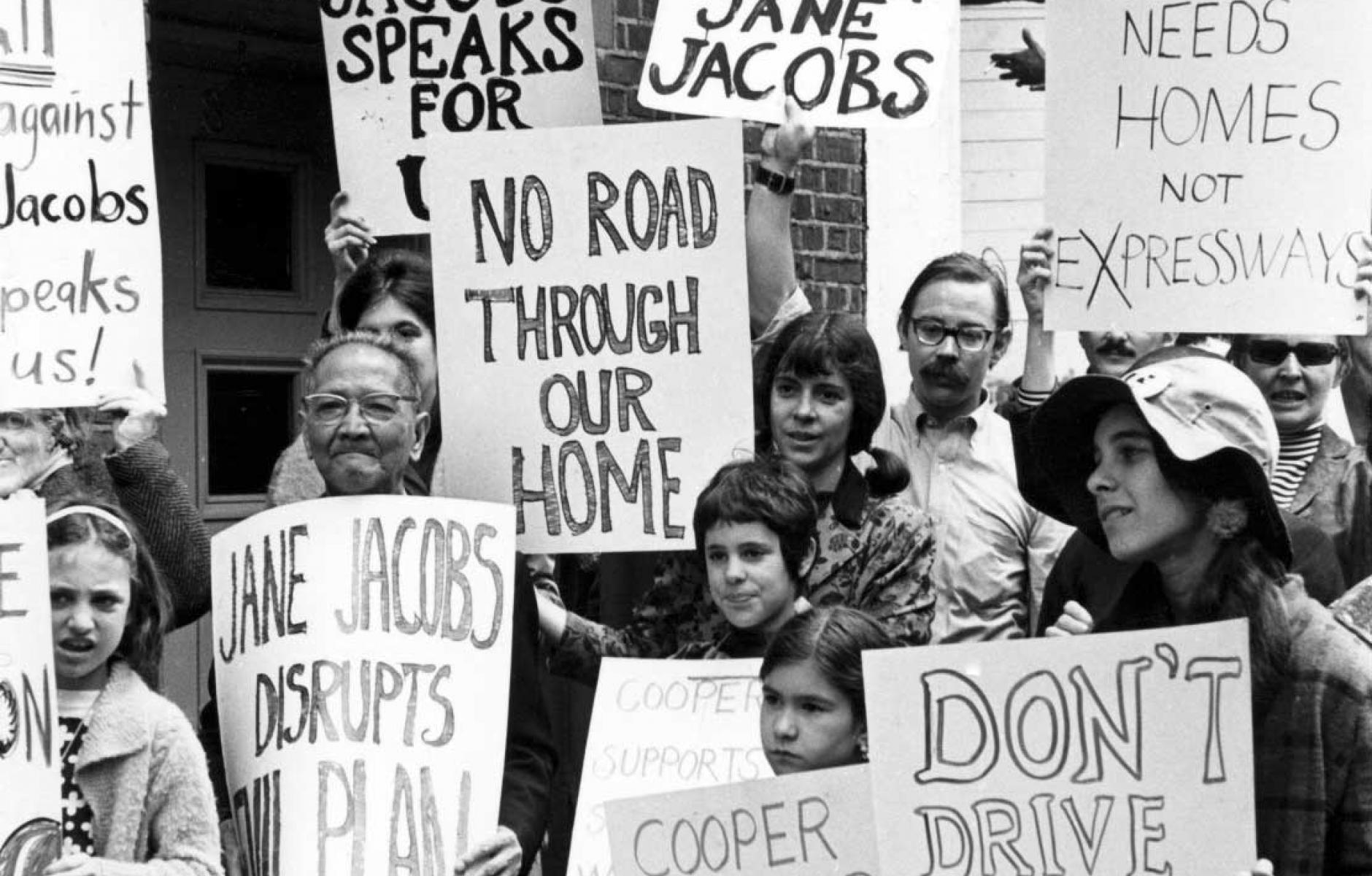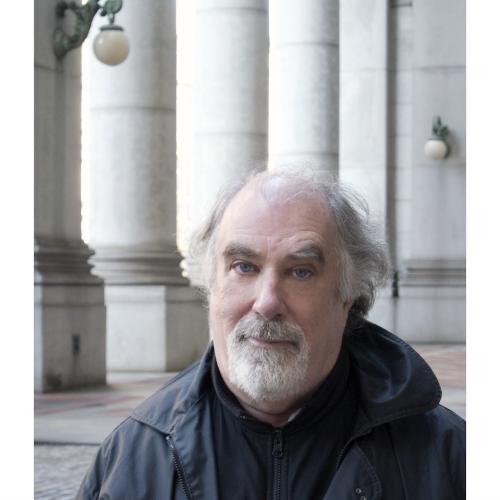
Jane Jacobs would be fighting to preserve affordable housing
Note: This article was written as a speech to the first annual Jane Jacobs Award at Met Council Housing.
Jane Jacobs wrote 12 wide-ranging, brilliant books. In them she wove together ideas about cities, city life, politics, economics, and social and cultural issues, so it’s hard to succinctly summarize her contributions to affordable housing in New York City. The most directly relevant writing was in her first book, The Death and Life of Great American Cities, which came from her experience of living in Greenwich Village. As you can see on YouTube, President Obama agrees that was “the most important book ever written on cities.”
By the way, her last book, written in 2004 and called Dark Ages Ahead, predicted the possibility of a President like our President Elect. [*]
Jacobs wrote about affordable housing in Death and Life in a chapter she called, “The need for aged buildings.” Good cities need old buildings, she said. That’s because the cost of new construction requires landlords to charge high rents to cover their costs, rents that only wealthy tenants and the most profitable businesses can afford.
“Stores, chain restaurants and banks go into new construction,” Jacobs wrote. “But neighborhood bars, local restaurants and pawn shops need older buildings. Supermarkets and shoe stores often go into new buildings; good bookstores and antique dealers seldom do.”
“Pawn shops” sounds a little archaic today, because Death and Life was written 55 years ago. We’re more likely now to see a bank than a pawn shop, but we all know about chain stores.
When the book was written, there were almost 2 million rent-controlled or rent-stabilized apartments in New York City, including apartments owned and operated by the New York City Housing Authority. Since that time, NYCHA and government programs have built or subsidized significants amounts of new affordable housing in New York City. But there are now fewer than half the number of those apartments than there were 55 years ago.
Other government policies and subsidies have enabled and even promoted the the conversion of inexpensive rental buildings into condos and co-ops in an overheated market. These became instruments for financial speculation and valuable for non-residents of the city.
The most expensive and profitable buildings ever constructed in the history of New York City are the super-tall towers for the super-rich that we see on the new Billionaire Row on 57th Street and in various permutations around Manhattan and parts of Brooklyn.
Economists supported this construction almost unanimously, from liberals like Paul Krugman to conservatives like Ed Glaeser. Ideologically, they said the principle of supply and demand meant that if we remove restrictions on building (like zoning and rent stabilization), the market would build so many apartments that prices would go down. Glaeser took this further, with his concept of “hyperdensity” (think 90-story towers). But the truth is, there is nowhere in the world that has built “super talls” where prices have gone down as a result. With rising income inequality, there is far more money to be made in the construction of luxury housing than housing affordable for the middle class and the poor. Until that changes, few if any will build anything but luxury housing.
Of course many of of the new luxury towers were built with programs like 421-A, with requirements for new affordable housing. Under Mayor Bloomberg and now Mayor de Blasio, the city promoted public-private partnerships that in places like Billionaire Row made unprecedented amounts of money for private developers and investors. Frequently, old buildings with inexpensive apartments were torn down and replaced with super-luxury condos or subsidized affordable housing far beyond the reach of the tenants who were evicted. The people in this room tonight know that well, of course.
This brings us to Jane Jacobs the Activist. Jacobs was the first private citizen to stop Robert Moses. She didn’t do it by herself, by any means, but she was the chief strategist and public voice for the group of downtowners who stopped Robert Moses’s Lower Manhattan Expressway, a 10-lane elevated highway that was supposed to run through SoHo. Preparing for it, Moses used Federal funding for slum clearance to remove hundreds of families and small businesses from the path of the highway.
The only person before Jacobs who had been able to stop Moses was President Franklin Delano Roosevelt. FDR tried to stop Moses when he was Governor of New York, but he failed. As President, however, Roosevelt used the National Defense Act to stop a bridge that Moses wanted to build in a location between the Brooklyn Navy Yard and the Atlantic Ocean.
Jacobs was also was behind the construction of the West Village Houses, low-rise, affordable rental buildings not far from her house at 555 Hudson Street. Why she was ultimately disappointed by the development is a longer story than we have time for today.
But today we have a third of all New York households paying at least half their income in rent, and homelessness in the city is at its highest level since the Great Depression.
I believe that if Jacobs were alive today and in her prime, she would try to increase the affordable housing voice in the burgeoning movement to unite neighborhood and preservation groups to fight against the domination of the Real Estate Board of New York, which has never been more influential than it is today.
We can all understand why REBNY members want to build more of the most profitable product they have ever had, but that doesn’t mean we have to agree with them about the best way forward for New York City. The city will suffer if we don’t stop their efforts to weaken historic preservation laws, for example. Recent studies by groups like the Historic Districts Council show that historic preservation also protects affordable housing.
By the way, how do you tell the difference between REBNY and a terrorist organization?
[Answer] You can negotiate with a terrorist organization.
I have attended and spoken at a few of these neighborhood preservation meetings recently. They passionately want regime change. At one the head of the Coalition to save Chinatown and the East Village said, “We knew Mayor de Blasio was running for office on a Tale of Two Cities – we just didn’t know he wanted to get rid of our city.”
So in closing, I want to bring up some good news and some bad news.
First the bad news.
In my neighborhood on the Upper West Side, it was recently announced that a wonderful Georgian-style SRO that is clean and safe and that offers room and board at reasonable prices will be sold and converted to luxury housing. And Salvation Army senior housing in a good pre-war apartment building on West End Avenue at 95th Street has also been sold. Manhattan’s citizens can not afford these losses.
Now some possible good news.
Last week, the Tribeca Trust began campaigning to stop the demolition of a city-owned building at 137 Centre Street, planned to be sold to a developer who will build a super-tall tower. 137 Centre Street is a distinguished 1911 building by the important architectural firm of Schwartz & Gross. The building pairs with the neighboring 139 Centre Street, both of them just a few blocks from where we sit tonight. The Tribeca Trust is floating a plan to have the building given to a community trust for conversion to 65 permanent units of affordable housing. Win Win.
This is the type of work that I believe Jane Jacobs would be doing if she were alive today. We have an affordability crisis in New York City, and we have to get over the idea that we will solve it by tearing down old buildings for super-tall, super-luxury housing.
* Richard Florida, “Did Jane Jacobs Predict the Rise of Trump?” CITYLAB, December 20, 2016: “The fourth pillar is the ‘dumbing down’ of taxes. In place of public investments that build cities and societies, taxes and government investment come to be seen as waste. The result is that all sorts of public goods—education, transit, infrastructure and the social safety which contribute to a functioning and cohesive society—start to break down. Jacobs perceptively identifies the looming “new urban crisis” of unaffordable housing, gaping inequality, escalating sprawl, and congestion facing cities as the result of this sort of attack on taxes and public investment.”





